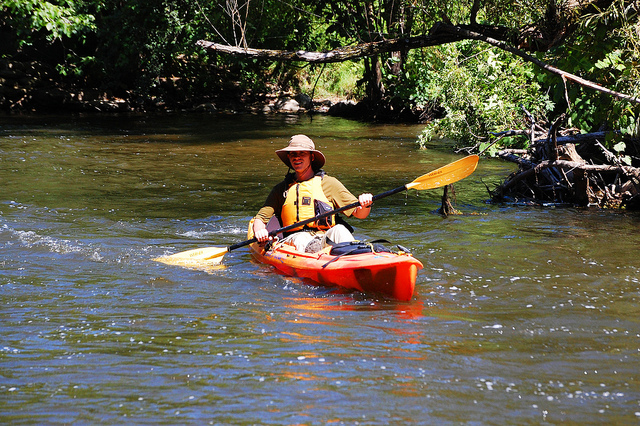The State of Michigan, through the Michigan Department of Environmental Quality, in accordance with the U.S. Clean Water Act, established “designated uses” for the waters of the state. These uses are the targets toward which watershed management policies aim. It is the goal of Michigan residents to attain these designated uses for every water body in Michigan. Included in these designated uses are in-stream recreational uses. Two types of recreational use are designated:
for the waters of the state. These uses are the targets toward which watershed management policies aim. It is the goal of Michigan residents to attain these designated uses for every water body in Michigan. Included in these designated uses are in-stream recreational uses. Two types of recreational use are designated:
Year-round partial body contact (PBC) recreation (for example, canoeing, kayaking or wading.) The maximum levels for PBC recreation are “1,000 E. coli per 100 milliliters (mL) [of water].”
Total body contact (TBC) recreation between May 1 and October 31 (for example, swimming.) The maximum levels for TBC recreation are “130 E. coli per 100 (mL), as a 30-day geometric mean.” In addition, “at no time shall the waters of the state . . . contain more than a maximum of 300 E. coli per 100 mL.”
These levels were es tablished to protect people from contracting illnesses due to contact with waters containing bacteria. Any open water can contain levels of bacteria originating from a variety of sources such as wildlife. Research compiled by the DEQ indicates that, when levels exceed the standards listed above, the likelihood of gastrointestinal illness, such as bacterial infections (cholera, salmonellosis), viral infections (hepatitis, gastroenteritis), or protozoa infections (cryptosporidiosis, giardiasis), increases. Once these pathogens are in a stream or lake, they can infect humans through ingestion, skin contact or contaminated fish. This is not always due directly to E. coli, but high levels of E. coli may be indicative of other human health contaminants.
tablished to protect people from contracting illnesses due to contact with waters containing bacteria. Any open water can contain levels of bacteria originating from a variety of sources such as wildlife. Research compiled by the DEQ indicates that, when levels exceed the standards listed above, the likelihood of gastrointestinal illness, such as bacterial infections (cholera, salmonellosis), viral infections (hepatitis, gastroenteritis), or protozoa infections (cryptosporidiosis, giardiasis), increases. Once these pathogens are in a stream or lake, they can infect humans through ingestion, skin contact or contaminated fish. This is not always due directly to E. coli, but high levels of E. coli may be indicative of other human health contaminants.
So, is it safe to swim in the river?
The answer is a little complicated, but along most of the length of the Huron River, it is safe to swim. High bacteria counts have not been detected downstream of Kent Lake all the way to Argo Pond, and then, again downstream of Geddes Pond (Gallup Park) all the way to Lake Erie. The main exception, then is the river running through the Ann Arbor urban area between Argo and Geddes Ponds. Also, bacteria counts rise following rain storms, so it is a good idea to refrain from swimming a couple days following rain. Caution should also be exercised when swimming in tributaries to the Huron, especially Honey Creek.



